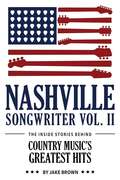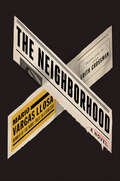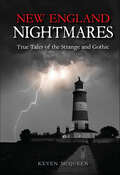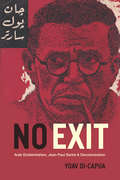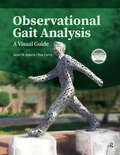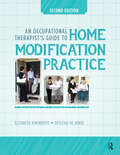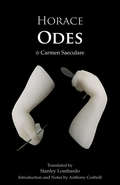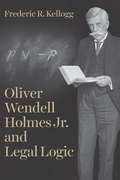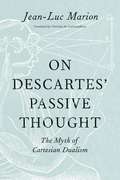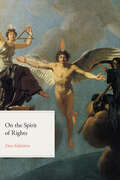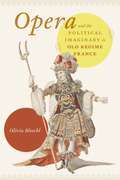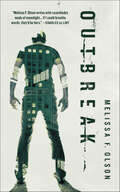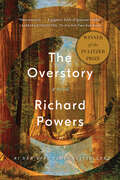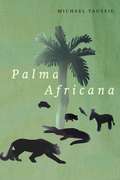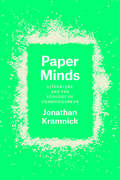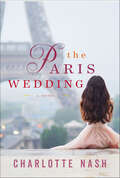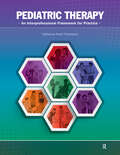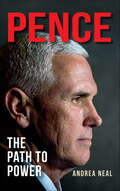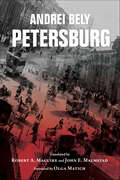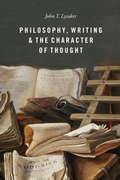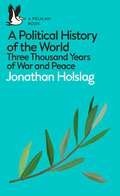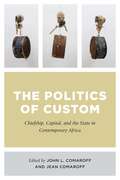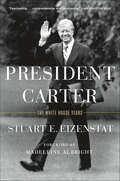- Table View
- List View
Nashville Songwriter, Volume 2: The Inside Stories Behind Country Music's Greatest Hits
by Jake BrownNashville's best-kept secret has long been that the majority of country music's biggest hits are written by a Shakespearean behind-the-scenes club of Music Row songsmiths who have churned out many of country's most beloved classics over the past fifty years. Picking up with Volume II of the first-of-its-kind “NASHVILLE SONGWRITER” book series, country music fans get more behind-the-scenes V.I.P. access as this book series reveals the first TOTALLY AUTHORIZED telling of the true stories that inspired hundreds of # 1s by a collective roster of the biggest multi-platinum Country Superstars. <P><P> With 300+ # 1 hits covered throughout the 300+ page book, including many of today's hottest Country Music hits, including recent Carrie Underwood, Lady Antebellum, George Strait, Florida/Georgia Line, Sam Hunt, Eric Church, Miranda Lambert, Tim McGraw, Little Big Town, Jason Aldean, Dierks Bentley, Thomas Rhett, Thomas Rhett, Kenny Chesney, Miranda Lambert, Blake Shelton, George Jones, Zac Brown Band, Toby Keith, Cole Swindell, Johnny Lee, Loretta Lynn, Jerry Reed, Vince Gill, Conway Twitty, Merle Haggard, the Dixie Chicks, Rodney Atkins, Rhett Akins, Luke Bryan, Dustin Lynch, Alan Jackson, Lee Anne Womack, Martina McBride, Gary Evans, etc.
The Neighborhood: A Novel
by Mario Vargas LlosaWINNER OF THE NOBEL PRIZE IN LITERATUREA thrilling tale of desire and Peruvian corruption swirls around a scandalous exposé that leads to murderFrom the Nobel Laureate comes a politically charged detective novel weaving through the underbelly of Peruvian privilege. In the 1990s, during the turbulent and deeply corrupt years of Alberto Fujimori’s presidency, two wealthy couples of Lima’s high society become embroiled in a disturbing vortex of erotic adventures and politically driven blackmail. One day Enrique, a high-profile businessman, receives a visit from Rolando Garro, the editor of a notorious magazine that specializes in salacious exposés. Garro presents Enrique with lewd pictures from an old business trip and demands that he invest in the magazine. Enrique refuses, and the next day the pictures are on the front page. Meanwhile, Enrique’s wife is in the midst of a passionate and secret affair with the wife of Enrique’s lawyer and best friend. When Garro shows up murdered, the two couples are thrown into a whirlwind of navigating Peru’s unspoken laws and customs, while the staff of the magazine embark on their greatest exposé yet.Ironic and sensual, provocative and redemptive, the novel swirls into the kind of restless realism that has become Mario Vargas Llosa’s signature style. A twisting, unpredictable tale, The Neighborhood is at once a scathing indictment of Fujimori’s regime and a crime thriller that evokes the vulgarity of freedom in a corrupt system.
New England Nightmares: True Tales of the Strange and Gothic
by Keven McQueenNew England is renowned for its quaint towns, beautiful landscapes, and busy ports. But it is also infamous as the setting for unexplained deaths, ghost stories, bizarre murders, and peculiar wills and epitaphs.In New England Nightmares: True Tales of the Strange and Gothic, author Keven McQueen explores the darker and stranger side of New England and the Mid-Atlantic. With shocking and unforgettable tales from the tip of Maine all the way to the New Jersey shore, this eerie collection explores our fascination with death and the unknown, including tales of medical students digging up bodies to dissect, of a murderer's bones being wired together after death, and of Dr. Timothy Clark Smith, who requested that he be buried with a breathing tube and glass window so he could see the outside world.An intriguing and frightful look into the odder side of the Northeast, New England Nightmares promises to send chills down your spine.
Nine Pints: A Journey Through the Money, Medicine, and Mysteries of Blood
by Rose GeorgeAn eye-opening exploration of blood, the lifegiving substance with the power of taboo, the value of diamonds and the promise of breakthrough scienceBlood carries life, yet the sight of it makes people faint. It is a waste product and a commodity pricier than oil. It can save lives and transmit deadly infections. Each one of us has roughly nine pints of it, yet many don’t even know their own blood type. And for all its ubiquitousness, the few tablespoons of blood discharged by 800 million women are still regarded as taboo: menstruation is perhaps the single most demonized biological event.Rose George, author of The Big Necessity, is renowned for her intrepid work on topics that are invisible but vitally important. In Nine Pints, she takes us from ancient practices of bloodletting to the breakthough of the "liquid biopsy," which promises to diagnose cancer and other diseases with a simple blood test. She introduces Janet Vaughan, who set up the world’s first system of mass blood donation during the Blitz, and Arunachalam Muruganantham, known as “Menstrual Man” for his work on sanitary pads for developing countries. She probes the lucrative business of plasma transfusions, in which the US is known as the “OPEC of plasma.” And she looks to the future, as researchers seek to bring synthetic blood to a hospital near you.Spanning science and politics, stories and global epidemics, Nine Pints reveals our life's blood in an entirely new light.Nine Pints was named one of Bill Gates recommended summer reading titles for 2019.
No Exit: Arab Existentialism, Jean-Paul Sartre, & Decolonization
by Yoav Di-CapuaIt is a curious and relatively little-known fact that for two decades—from the end of World War II until the late 1960s—existentialism’s most fertile ground outside of Europe was in the Middle East, and Jean-Paul Sartre was the Arab intelligentsia’s uncontested champion. In the Arab world, neither before nor since has another Western intellectual been so widely translated, debated, and celebrated. By closely following the remarkable career of Arab existentialism, Yoav Di-Capua reconstructs the cosmopolitan milieu of the generation that tried to articulate a political and philosophical vision for an egalitarian postcolonial world. He tells this story by touring a fascinating selection of Arabic and Hebrew archives, including unpublished diaries and interviews. Tragically, the warm and hopeful relationships forged between Arab intellectuals, Sartre, Simone de Beauvoir, and others ended when, on the eve of the 1967 war, Sartre failed to embrace the Palestinian cause. Today, when the prospect of global ethical engagement seems to be slipping ever farther out of reach, No Exit provides a timely, humanistic account of the intellectual hopes, struggles, and victories that shaped the Arab experience of decolonization and a delightfully wide-ranging excavation of existentialism’s non-Western history.
Observational Gait Analysis: A Visual Guide
by Janet Adams Kay CernyObservational Gait Analysis: A Visual Guide is a pedagogical manual and video library that provides a thorough review of key characteristics of normal gait that are important for observational clinical gait analysis.This visual guide by Drs. Jan Adams and Kay Cerny has unique features to further the understanding of examination and evaluation of the subject’s gait, such as: Normal and pathological gait are described using figures and graphs, along with gait videos and 3D graphs to show the kinematics and kinetics described Functional tools used as outcome measures to evaluate gait performance in the community environment including Dynamic Gait Test, Six Minute Walk Test, Ten Meter Walk Test, to name a few In addition to the unique features, the pathological gait section presents descriptions of gait deviations included in a new clinical Observational Gait Analysis (OGA) tool, along with probable causes for each of the deviations. Case studies are presented using this new tool for examining and evaluating the subject’s gait. Bonus!Students will be able to watch antero-posterior and lateral videos of individuals with gait deviations, complete the OGA tool to document their gait examination, and evaluate their examination results. They will then validate their observational skills by comparing their results to the text’s case study OGA results and the skeletal model and motion and moment graphs completed by 3D instrumented analysis of the same individual. The student will then compare their evaluation of causes of deviations to that included in the case study. Included with the text are online supplemental materials for faculty use in the classroom.Observational Gait Analysis: A Visual Guide will be the go-to resource for clinical tools to analyze gait for physical therapy and prosthetic and orthotic students and clinicians, as well as other professionals interested in the clinical analysis of persons with gait disability.
An Occupational Therapist’s Guide to Home Modification Practice
by Elizabeth Ainsworth Desleigh de JongeOlder people and people with a disability have a right to be included in all aspects of home and community life, and yet, environmental barriers continue to exist in the built environment. There are concerns about how well homes can support older people and people with a disability over time as their needs change.Occupational therapists are well suited to determining the most appropriate home modification solutions to address environmental barriers. They possess the knowledge and skills necessary to evaluate people’s current and future needs in the context of the nature and use of the environment and can work collaboratively with design and construction professionals to develop solutions.To be comprehensive and effective in their approach, occupational therapists need to understand not only the individual’s requirements, but also, the ethical and legal contexts for practice, the technical aspects of the built environment, the relevance and intent of access standards and design approaches, and the application of a range of products and finishes.An Occupational Therapist’s Guide to Home Modification Practice, Second Edition by Elizabeth Ainsworth and Desleigh de Jonge and their team of expert contributors provides comprehensive information to inform occupational therapists about current practice and research. This includes the authors using a transactional approach to examine the person-occupation-environment interaction and providing occupational therapists with a detailed understanding of the various dimensions of the home environment that can impact on client’s home modification decisions.New material has been provided relating to research and practice issues, such as an overview of the latest home modification outcome research findings as documented in literature; an update on outcome evaluation; new research information about the dimensions of the home impacting on decision making; additional information grabrail and ramp prescription; and the inclusion of new case studies illustrating minor and major modification solutions for clients who present with diverse needs. In the Second Edition you’ll find: A detailed understanding of aspects of the home environment that impact home modification decisions A review of legislative environment and funding systems that facilitate service delivery An overview of home modification services, as well as future trends A range of comprehensive case studies — illustrated by photographs Additional theory to inform knowledge, and skill development, that can be used in home modification practice worldwide Included with the text are online supplemental materials for faculty use in the classroom..An Occupational Therapist’s Guide to Home Modification Practice, Second Edition provides a range of resources and tools, and it can be used as a teaching aid to support students, interns, and novice therapists or as a manual for reflection and practice for more experienced home modification practitioners.
Odes: With Carmen Saeculare
by HoraceHorace's Odes enjoys a long tradition of translation into English, most famously in versions that seek to replicate the quantitative rhythms of the Latin verse in rhymed quatrains. Stanley Lombardo, one of our preeminent translators of classical literature, now gives us a Horace for our own day that focuses on the dynamics, sense, and tone of the Odes, while still respecting its architectonic qualities.In addition to notes on each of the odes, Anthony Corbeill offers an Introduction that sketches the poet's tumultuous political and literary careers, highlights the Odes' intricate construction and thematic breadth, and identifies some qualities of this work that shed light on a disputed question in its reception: Are these poems or lyrics?This dual-language edition will prove a boon to students of classical civilization, Roman literature, and lovers of one of the great masters of Latin verse. The Amazon Kindle and other flowing-text eBook editions include the text of the Latin originals at the end of the book and the line numbers are enclosed in square brackets and embedded at the end of lines.
Oliver Wendell Holmes Jr. and Legal Logic
by Frederic R. KelloggWith Oliver Wendell Holmes, Jr. and Legal Logic, Frederic R. Kellogg examines the early diaries, reading, and writings of Justice Oliver Wendell Holmes, Jr. (1841–1935) to assess his contribution to both legal logic and general logical theory. Through discussions with his mentor Chauncey Wright and others, Holmes derived his theory from Francis Bacon’s empiricism, influenced by recent English debates over logic and scientific method, and Holmes’s critical response to John Stuart Mill’s 1843 A System of Logic. Conventional legal logic tends to focus on the role of judges in deciding cases. Holmes recognized input from outside the law—the importance of the social dimension of legal and logical induction: how opposing views of “many minds” may converge. Drawing on analogies from the natural sciences, Holmes came to understand law as an extended process of inquiry into recurring problems. Rather than vagueness or contradiction in the meaning or application of rules, Holmes focused on the relation of novel or unanticipated facts to an underlying and emergent social problem. Where the meaning and extension of legal terms are disputed by opposing views and practices, it is not strictly a legal uncertainty, and it is a mistake to expect that judges alone can immediately resolve the larger issue.
On Descartes' Passive Thought: The Myth of Cartesian Dualism
by Jean-Luc Marion,On Descartes’ Passive Thought is the culmination of a life-long reflection on the philosophy of Descartes by one of the most important living French philosophers. In it, Jean-Luc Marion examines anew some of the questions left unresolved in his previous books about Descartes, with a particular focus on Descartes’s theory of morals and the passions. Descartes has long been associated with mind-body dualism, but Marion argues here that this is a historical misattribution, popularized by Malebranche and popular ever since both within the academy and with the general public. Actually, Marion shows, Descartes held a holistic conception of body and mind. He called it the meum corpus, a passive mode of thinking, which implies far more than just pure mind—rather, it signifies a mind directly connected to the body: the human being that I am. Understood in this new light, the Descartes Marion uncovers through close readings of works such as Passions of the Soul resists prominent criticisms leveled at him by twentieth-century figures like Husserl and Heidegger, and even anticipates the non-dualistic, phenomenological concepts of human being discussed today. This is a momentous book that no serious historian of philosophy will be able to ignore.
On the Spirit of Rights (The Life of Ideas)
by Dan EdelsteinBy the end of the eighteenth century, politicians in America and France were invoking the natural rights of man to wrest sovereignty away from kings and lay down universal basic entitlements. Exactly how and when did “rights” come to justify such measures? In On the Spirit of Rights, Dan Edelstein answers this question by examining the complex genealogy of the rights that regimes enshrined in the American and French Revolutions. With a lively attention to detail, he surveys a sprawling series of debates among rulers, jurists, philosophers, political reformers, writers, and others who were all engaged in laying the groundwork for our contemporary systems of constitutional governance. Every seemingly new claim about rights turns out to be a variation on a theme, as late medieval notions were subtly repeated and refined to yield the talk of “rights” we recognize today. From the Wars of Religion to the French Declaration of the Rights of Man and of the Citizen to the 1948 Universal Declaration of Human Rights, On the Spirit of Rights is a sweeping tour through centuries of European intellectual history and an essential guide to our ways of thinking about human rights today.
Opera and the Political Imaginary in Old Regime France
by Olivia BloechlFrom its origins in the 1670s through the French Revolution, serious opera in France was associated with the power of the absolute monarchy, and its ties to the crown remain at the heart of our understanding of this opera tradition (especially its foremost genre, the tragédie en musique). In Opera and the Political Imaginary in Old Regime France, however, Olivia Bloechl reveals another layer of French opera’s political theater. The make-believe worlds on stage, she shows, involved not just fantasies of sovereign rule but also aspects of government. Plot conflicts over public conduct, morality, security, and law thus appear side-by-side with tableaus hailing glorious majesty. What’s more, opera’s creators dispersed sovereign-like dignity and powers well beyond the genre’s larger-than-life rulers and gods, to its lovers, magicians, and artists. This speaks to the genre’s distinctive combination of a theological political vocabulary with a concern for mundane human capacities, which is explored here for the first time. By looking at the political relations among opera characters and choruses in recurring scenes of mourning, confession, punishment, and pardoning, we can glimpse a collective political experience underlying, and sometimes working against, ancienrégime absolutism. Through this lens, French opera of the period emerges as a deeply conservative, yet also more politically nuanced, genre than previously thought.
The Operation Reinhard Death Camps: Belzec, Sobibor, Treblinka
by Yitzhak AradUnder the code name Operation Reinhard, more than one and a half million Jews were murdered between 1942 and 1943 in the concentration camps of Belzec, Sobibor, and Treblinka, located in Nazi-occupied Poland. Unlike more well-known camps, which were used both for slave labor and extermination, these camps existed purely to murder Jews. Few victims survived to tell their stories, and the camps were largely forgotten after they were dismantled in 1943. The Operation Reinhard Death Camps bears eloquent witness to this horrific tragedy.This newly revised and expanded edition includes new material on the history of the Jews under German occupation in Poland; the execution and timing of Operation Reinhard; information about the ghettos in Lublin, Warsaw, Krakow, Radom, and Galicia; and updated numbers of the victims who were murdered during deportations. In addition to documenting the horror of the camps, Yitzhak Arad recounts the stories of those courageous enough to struggle against the Nazis and their "final solution." Arad's work retrieves the experiences of Operation Reinhard's victims and survivors from obscurity and exposes a terrible chapter in humanity's history.
Outbreak: A Nightshades Novel (The Nightshades Novels #3)
by Melissa F. OlsonMelissa F. Olson's thrilling FBI vampire procedural Nightshades series concludes with OutbreakThe Chicago field office of the Bureau of Preternatural Investigation is facing its deadliest challenge, yet—internal investigation! Alex and Lindy are on the hook, and on the run.But when all of the BPI’s captive vampires are broken free from their maximum security prison, and Hector finally steps out of the shadows, Alex must use every trick to stay ahead of both the BPI and the world’s most dangerous shade.Confrontation is inevitable. Success is not.At the Publisher's request, this title is being sold without Digital Rights Management Software (DRM) applied.
The Overstory: A Novel
by Richard PowersWinner of the Pulitzer Prize in Fiction Winner of the William Dean Howells Medal Shortlisted for the Man Booker Prize Over One Year on the New York Times Bestseller List A New York Times Notable Book and a Washington Post, Time, Oprah Magazine, Newsweek, Chicago Tribune, and Kirkus Reviews Best Book of the Year "The best novel ever written about trees, and really just one of the best novels, period." —Ann Patchett The Overstory, winner of the 2019 Pulitzer Prize in Fiction, is a sweeping, impassioned work of activism and resistance that is also a stunning evocation of—and paean to—the natural world. From the roots to the crown and back to the seeds, Richard Powers’s twelfth novel unfolds in concentric rings of interlocking fables that range from antebellum New York to the late twentieth-century Timber Wars of the Pacific Northwest and beyond. There is a world alongside ours—vast, slow, interconnected, resourceful, magnificently inventive, and almost invisible to us. This is the story of a handful of people who learn how to see that world and who are drawn up into its unfolding catastrophe.
Palma Africana
by Michael Taussig“It is the contemporary elixir from which all manner of being emerges, the metamorphic sublime, an alchemist’s dream.” So begins Palma Africana, the latest attempt by anthropologist Michael Taussig to make sense of the contemporary moment. But to what elixir does he refer? Palm oil. Saturating everything from potato chips to nail polish, palm oil has made its way into half of the packaged goods in our supermarkets. By 2020, world production will be double what it was in 2000. In Colombia, palm oil plantations are covering over one-time cornucopias of animal, bird, and plant life. Over time, they threaten indigenous livelihoods and give rise to abusive labor conditions and major human rights violations. The list of entwined horrors—climatic, biological, social—is long. But Taussig takes no comfort in our usual labels: “habitat loss,” “human rights abuses,” “climate change.” The shock of these words has passed; nowadays it is all a blur. Hence, Taussig’s keen attention to words and writing throughout this work. He takes cues from precursors’ ruminations: Roland Barthes’s suggestion that trees form an alphabet in which the palm tree is the loveliest; William Burroughs’s retort to critics that for him words are alive like animals and don’t like to be kept in pages—cut them and the words are let free. Steeped in a lifetime of philosophical and ethnographic exploration, Palma Africana undercuts the banality of the destruction taking place all around us and offers a penetrating vision of the global condition. Richly illustrated and written with experimental verve, this book is Taussig’s Tristes Tropiques for the twenty-first century.
Paper Minds: Literature and the Ecology of Consciousness
by Jonathan KramnickHow do poems and novels create a sense of mind? What does literary criticism say in conversation with other disciplines that addresses problems of consciousness? In Paper Minds, Jonathan Kramnick takes up these vital questions, exploring the relations between mind and environment, the literary forms that uncover such associations, and the various fields of study that work to illuminate them. Opening with a discussion of how literary scholarship’s particular methods can both complement and remain in tension with corresponding methods particular to the sciences, Paper Minds then turns to a series of sharply defined case studies. Ranging from eighteenth-century poetry and haptic theories of vision, to fiction and contemporary problems of consciousness, to landscapes in which all matter is sentient, to cognitive science and the rise of the novel, Kramnick’s essays are united by a central thematic authority. This unified approach of these essays shows us what distinctive knowledge that literary texts and literary criticism can contribute to discussions of perceptual consciousness, created and natural environments, and skilled engagements with the world.
The Paris Wedding: A Novel
by Charlotte NashIn Australian bestselling author Charlotte Nash's U.S. debut, a young woman attends her ex-boyfriend's Paris wedding and discovers more than she ever dreamed in the ultimate city of love.Imagine you are invited to Paris, the City of Love, to witness the wedding of your first love to a woman you’ve never met. Would you go?It’s been ages since Rachael West has seen the man she once believed she couldn’t live without. Receiving his wedding invitation was bittersweet—she was oddly touched he’s asked her, but knows that facing him on this day would be the hardest thing she’s ever done.But her friends and family convince her to attend. After all, it’s an all-expenses-paid trip to Paris! Surely she can get through that one day, and discover all the delights of that magical city the remainder of the time. So Rachael leaves her small town, setting off for the City of Lights with her best friend, two feuding neighbors, and a suitcase full of home-sewn couture in tow. She’s determined to let Paris work its magic—and it does by way of a handsome photojournalist. And before her adventure is over, Rachael will be faced with yet another choice. But this time, hers isn’t the only happiness at risk . . . .
Pediatric Therapy: An Interprofessional Framework for Practice
by Catherine Rush ThompsonResearch has become increasingly clear regarding the benefits of interprofessional collaborations in health care. Pediatric therapists have long recognized that coordinated care and advocacy for children and their families promote healthy growth, development, and participation in a wide range of environments. To this end, Pediatric Therapy: An Interprofessional Framework for Practice has been designed to engage students and clinicians in interprofessional learning experiences that cultivate collaborative practice and optimize the outcomes of those served. Dr. Catherine Rush Thompson and her team of contributors represent years of experience across the fields of physical therapy, occupational therapy, and speech-language pathology. Rather than discussing each of these fields in isolation, however, the text explores professional roles and responsibilities, emphasizing essential skills needed for collaboration in a range of pediatric settings.Key Interprofessional Concepts Covered: Foundations and philosophies that serve as a basis for pediatric care Assessing infants, children, youth, and adolescents in various situations Legal and ethical considerations impacting pediatric care Unique issues encountered in settings where pediatric therapies are offered Using current evidence and the clinical reasoning process for designing and modifying interventions Each section of Pediatric Therapy offers case-based learning activities requiring interprofessional collaboration for clinical reasoning to optimize care. This approach encourages an appreciation of the importance of holistic care, as well as an understanding of the roles, frames of reference, and approaches favored by each discipline. Pediatric therapists and others who work in healthcare and educational settings will appreciate Pediatric Therapy: An Interprofessional Framework for Practice as a guide for developing the interprofessional competencies needed to achieve desired outcomes for children and their families.
Pence: The Path to Power
by Andrea NealWhat does a person need to learn before they can survive as the vice president under a tumultuous administration? How do you continue to honor the laws and the constitution of the country in the face of increasingly vitriolic partisan politics? Mike Pence's vice presidency of the United States wasn't always easy. To some, he is the personification of American conservative values, but to others, his ideals are the epitome of prejudice and bigotry. In Pence: The Path to Power, journalist Andrea Neal showcases how the vice president arrived at this position of influence. Neal interviews friends, family, staff, former teachers, and politicians on both sides of the aisle to reveal a multifaceted view of the self-described Christian, Conservative, and Republican–in that order–from his beginnings in a large Irish Catholic family in Columbus, Indiana, through the scandals of his first election, to his time beside Donald Trump. This candid look at Mike Pence's life exposes his unexpected path to power and the individuals who influenced him along the way.
Petersburg (Twentieth Century Classics Ser.)
by Andrei BelyAndrei Bely's novel Petersburg is considered one of the four greatest prose masterpieces of the 20th century. In this new edition of the best-selling translation, the reader will have access to the translators' detailed commentary, which provides the necessary historical and literary context for understanding the novel, as well as a foreword by Olga Matich, acclaimed scholar of Russian literature.Set in 1905 in St. Petersburg, a city in the throes of sociopolitical conflict, the novel follows university student Nikolai Apollonovich Ableukhov, who has gotten entangled with a revolutionary terrorist organization with plans to assassinate a government official–Nikolai's own father, Apollon Apollonovich Ableukhov. With a sprawling cast of characters, set against a nightmarish city, it is all at once a historical, political, philosophical, and darkly comedic novel.
Philosophy, Writing, & the Character of Thought
by John T. LysakerLysaker examines the relationship between philosophical thought and the act of writing to explore how this dynamic shapes the field of philosophy. Philosophy’s relation to the act of writing is John T. Lysaker’s main concern in Philosophy, Writing, and the Character of Thought. Whether in Plato, Montaigne, Nietzsche, Wittgenstein, or Derrida, philosophy has come in many forms, and those forms—the concrete shape philosophizing takes in writing—matter. Much more than mere adornment, the style in which a given philosopher writes is often of crucial importance to the point he or she is making, part and parcel of the philosophy itself. Considering how writing influences philosophy, Lysaker explores genres like aphorism, dialogue, and essay, as well as logical-rhetorical operations like the example, irony, and quotation. At the same time, he shows us the effects of these rhetorical devices through his own literary experimentation. In dialogue with such authors as Benjamin, Cavell, Emerson, and Lukács, he aims to revitalize philosophical writing, arguing that philosophy cannot fulfill its intellectual and cultural promise if it keeps to professional articles and academic prose. Instead, philosophy must embrace writing as an essential, creative activity, and deliberately reform how it approaches its subject matter, readership, and the evolving social practices of reading and reflection.
A Political History of the World: Three Thousand Years of War and Peace (Pelican Books)
by Jonathan HolslagA three-thousand year history of the world that examines the causes of war and the search for peaceIn three thousand years of history, China has spent at least eleven centuries at war. The Roman Empire was in conflict during at least 50 per cent of its lifetime. Since 1776, the United States has spent over one hundred years at war. The dream of peace has been universal in the history of humanity. So why have we so rarely been able to achieve it? In A Political History of the World, Jonathan Holslag has produced a sweeping history of the world, from the Iron Age to the present, that investigates the causes of conflict between empires, nations and peoples and the attempts at diplomacy and cosmopolitanism. A birds-eye view of three thousand years of history, the book illuminates the forces shaping world politics from Ancient Egypt to the Han Dynasty, the Pax Romana to the rise of Islam, the Peace of Westphalia to the creation of the United Nations.This truly global approach enables Holslag to search for patterns across different eras and regions, and explore larger questions about war, diplomacy, and power. Has trade fostered peace? What are the limits of diplomacy? How does environmental change affect stability? Is war a universal sin of power? At a time when the threat of nuclear war looms again, this is a much-needed history intended for students of international politics, and anyone looking for a background on current events.
The Politics of Custom: Chiefship, Capital, and the State in Contemporary Africa
by John L. Comaroff Jean ComaroffHow are we to explain the resurgence of customary chiefs in contemporary Africa? Rather than disappearing with the tide of modernity, as many expected, indigenous sovereigns are instead a rising force, often wielding substantial power and legitimacy despite major changes in the workings of the global political economy in the post–Cold War era—changes in which they are themselves deeply implicated. This pathbreaking volume, edited by anthropologists John L. Comaroff and Jean Comaroff, explores the reasons behind the increasingly assertive politics of custom in many corners of Africa. Chiefs come in countless guises—from university professors through cosmopolitan businessmen to subsistence farmers–but, whatever else they do, they are a critical key to understanding the tenacious hold that “traditional” authority enjoys in the late modern world. Together the contributors explore this counterintuitive chapter in Africa’s history and, in so doing, place it within the broader world-making processes of the twenty-first century.
President Carter: The White House Years
by Stuart E. EizenstatThe definitive history of the Carter Administration from the man who participated in its surprising number of accomplishments—drawing on his extensive and never-before-seen notes.Stuart Eizenstat was at Jimmy Carter’s side from his political rise in Georgia through four years in the White House, where he served as Chief Domestic Policy Adviser. He was directly involved in all domestic and economic decisions as well as in many foreign policy ones. Famous for the legal pads he took to every meeting, he draws on more than 5,000 pages of notes and 350 interviews of all the major figures of the time, to write the comprehensive history of an underappreciated president—and to give an intimate view on how the presidency works. Eizenstat reveals the grueling negotiations behind Carter’s peace between Israel and Egypt, what led to the return of the Panama Canal, and how Carter made human rights a presidential imperative. He follows Carter’s passing of America’s first comprehensive energy policy, and his deregulation of the oil, gas, transportation, and communications industries. And he details the creation of the modern vice-presidency. Eizenstat also details Carter’s many missteps, including the Iranian Hostage Crisis, because Carter’s desire to do the right thing, not the political thing, often hurt him and alienated Congress. His willingness to tackle intractable problems, however, led to major, long-lasting accomplishments. This major work of history shows first-hand where Carter succeeded, where he failed, and how he set up many successes of later presidents.
